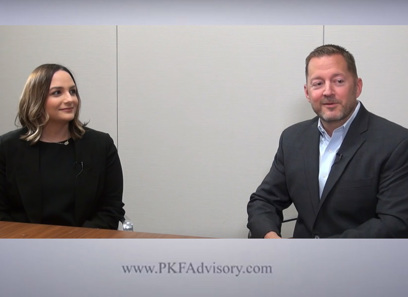Exploring the Monetary and legal Elements of Mergers and Acquisitions Transactions

Overview of Mergers and Acquisitions
Mergers and procurements (M&A) stand for a significant section of corporate method, with many purchases taking place around the world each year. These tactical maneuvers are largely aimed at boosting affordable benefit, broadening market share, and attaining functional synergies. M&An activities commonly fall under 2 distinct groups: mergings, where two business combine to develop a brand-new entity, and procurements, where one firm acquisitions one more, thus maintaining its identity.
The motivations behind M&A transactions are differed. Firms may pursue these strategies to expand their item offerings, get in brand-new markets, or take advantage of technical innovations (Economic factors influencing M&A). In addition, M&A can act as a means to get rid of competitors or get to valuable intellectual building
The process of M&An includes numerous phases, consisting of target recognition, combination, evaluation, and settlement. Effective deals require comprehensive due diligence to assess economic wellness, operational abilities, and potential responsibilities of the target firm. Moreover, cultural positioning between merging entities plays a vital role in making certain a smooth transition and long-term success. As services navigate the complexities of M&A, recognizing the prospective difficulties and strategic imperatives is essential for achieving desired end results in an increasingly competitive landscape.
Legal Framework and Conformity
Comprehending the legal structure and compliance requirements surrounding acquisitions and mergings is necessary for navigating the intricacies of these purchases - Economic factors influencing M&A. These processes are controlled by a myriad of laws at both federal and state levels, which aim to ensure fair competition, shield stakeholders, and support corporate governance standards
Key regulatory bodies, such as the Federal Trade Compensation (FTC) and the Securities and Exchange Commission (SEC), apply antitrust regulations and safety and securities laws, respectively. Companies need to perform thorough due persistance to identify any kind of potential legal obstacles, including governing authorizations or anti-competitive problems required for a successful transaction.
Furthermore, compliance with disclosure commitments is vital, particularly when public business are included. This consists of filing called for documentation and supplying exact details to investors and governing authorities.
Cross-border M&A purchases present extra layers of complexity, as differing lawful requirements and regulative frameworks should be navigated. Involving lawful guidance with proficiency in procurements and mergers is essential to make certain adherence to applicable laws and to mitigate dangers. Therefore, comprehending these legal structures not only facilitates conformity however likewise improves the chance of a efficient and successful merging or purchase.
Financial Assessment Methods

Among one of the look at this site most usual strategies are the Reduced Cash Money Circulation (DCF) evaluation, which estimates today value of predicted future capital, and the Equivalent Company Analysis (CCA), which evaluates a firm's worth loved one to comparable firms within the same market (Economic factors influencing M&A). Furthermore, Criterion Purchases Evaluation (PTA) examines historic acquisition information to develop criteria for appraisal
An additional significant method is the Asset-Based Appraisal, which concentrates on the business's net asset worth, supplying a substantial analysis of worth by taking into consideration both lasting and present responsibilities and assets. Each technique has its limitations and strengths, typically differing in applicability relying on the nature of the market and the service context.
Eventually, employing a mix of these financial valuation methods can generate a detailed understanding of a firm's worth, helping to guarantee that both purchasers and vendors engage in reasonable and fair purchases throughout the elaborate procedure of mergers and purchases.
Due Diligence Refine
Performing detailed due persistance is vital to revealing vital info concerning a target company before settling a merging or acquisition. This process involves a comprehensive review of the target's economic, operational, lawful, and regulatory elements. The key aim is to determine prospective threats and obligations that might affect the deal's value or post-merger efficiency.

In addition, cultural due diligence assesses the compatibility of the merging entities' business societies, which is critical for a successful combination. The due persistance procedure needs cooperation amongst various stakeholders, including lawful advice, financial consultants, and market specialists, to make sure an alternative understanding of the target firm.
Ultimately, the findings from due diligence notify settlement strategies and might bring about changes in the acquisition rate or terms, thus safeguarding the passions of the getting celebration and preparing for an effective merging or purchase.
Post-Merger Integration Challenges
While successful mergers and purchases frequently produce significant synergies and growth chances, the post-merger assimilation stage provides a myriad of difficulties that can undermine these benefits. Among the primary problems is the cultural combination of the merging entities. Diverse company cultures can result in employee resistance, reduced morale, and eventually, talent attrition. Developing a unified business identity is important to mitigate these dangers.
Another considerable obstacle depends on straightening systems and processes. The assimilation of inconsonant IT systems, functional techniques, and financial reporting can be taxing and intricate, usually resulting in functional disturbances. Furthermore, the failure to connect successfully during this stage can lead to confusion and false information among customers, stakeholders, and workers.
Financial assimilation also presents challenges, particularly in fixing up monetary plans and accountancy techniques. This imbalance can cause variances in economic reporting, affecting stakeholder self-confidence and market advice understanding.
Finally, regulatory conformity concerns may occur, requiring thorough interest to legal demands. Dealing with these difficulties without delay and purposefully is essential for recognizing the anticipated benefits of a merger or procurement, making certain long-lasting success and security.
Conclusion
In verdict, the detailed landscape of acquisitions and mergings requires a detailed understanding of both lawful and financial elements. Adherence to regulative frameworks makes sure compliance and alleviates anti-competitive dangers, while robust economic assessment strategies give critical understandings right into company worth.
The intricate landscape of mergings and procurements purchases requires a detailed understanding of both legal frameworks and financial valuation approaches. Regulative bodies, such as the FTC and SEC, enforce rigorous compliance requirements to protect versus anti-competitive actions, while durable monetary evaluation strategies are essential for properly assessing a firm's value. Successful purchases need complete due persistance to assess monetary wellness, functional capacities, and prospective obligations of the target company.Financial due diligence analyzes historical and forecasted economic declarations, cash money circulation analysis, and tax obligation conformity. Adherence to governing frameworks makes certain conformity and reduces anti-competitive threats, while robust financial evaluation strategies give essential insights right into company worth.